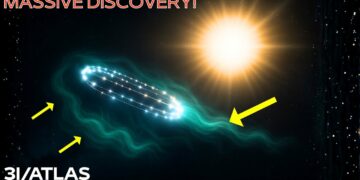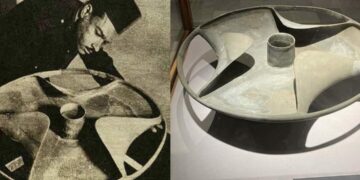In 1991, a group of salvage divers stumbled upon a shipwreck off the coast of New Jersey, unaware that their find would rewrite history. The wreck, identified as the German U-boat U-869, held secrets that challenged the official narrative of World War II and revealed a hidden chapter of the conflict.
The Construction and Mission of U-869
Ordered on August 25, 1941, under Captain Helmut Neuerburg, U-869 was a 251-foot Type IXC/40 submarine equipped with six torpedo tubes and a 37mm gun. After three years of construction and a year of crew training, mostly young recruits with a few veterans, the U-boat embarked on its first mission in 1944—a patrol of the Atlantic Ocean. It encountered no enemy vessels, but after receiving orders to head to the Strait of Gibraltar, U-869 vanished without a trace, maintaining complete radio silence.
The Official Cover-Up
The U.S. government claimed U-869 was sunk near Rabat, Morocco, by the USS Fowler and French submarine chaser L’Indiscret using depth charges. However, this account was based on assumptions, with no sightings or German reports confirming U-869’s presence there. The narrative, which credited the U.S. Navy with a victory, left the families of the 56 missing crew members without closure, only a memorial plaque to honor them.
The 1991 Discovery
In 1991, legendary diver Bill Nagle learned from a fishing boat captain about an unexplored wreck 60 miles off New Jersey, located at a perilous 235-foot depth along the continental shelf. Despite the risks, Nagle, joined by veteran divers John Chatterton and Richie Kohler, explored the site. They found a submarine with German markings, including swastika-emblazoned dishes, but no identification. Temporarily named “U-Who,” the wreck became a dangerous obsession.
The Curse of U-Who
Exploring U-869 was deadly. Over four years, three divers perished: Steve Feldman died in 1991 from CO2 buildup, and in 1992, Chris Rouse and his son Chrissy succumbed to decompression sickness after getting trapped in the wreck. Nagle himself died in 1993 from alcoholism. Rumors of a curse deterred new divers, but Chatterton and Kohler persisted, honoring the fallen crew by refusing to disturb their remains.
Unraveling the Identity
Initial clues, like German writing on controls, suggested the wreck was a U-boat, but it didn’t match known wrecks like U-550 or U-521. In 1997, a butter knife engraved with “Horenburg” pointed to Martin Horenburg, a U-869 crew member. Later that year, a spare parts box with a serial number confirmed the wreck as U-869, disproving the Morocco sinking narrative. Kohler personally returned the knife to Horenburg’s granddaughter and informed other families of their loved ones’ fate.
The Mystery of U-869’s Sinking
How did U-869 end up near New Jersey instead of Gibraltar? One theory suggests a communication error, with the submarine never receiving the order and continuing its patrol until it sank. The wreck showed severe damage, including a destroyed control room and hull breaches, indicating a sudden, catastrophic event. Three theories explain the sinking:
- Circular Run Torpedo: A malfunctioning torpedo may have circled back and struck U-869. However, no ship reported an explosion, and the trained crew likely knew countermeasures.
- U.S. Destroyer Attack: USS Howard D. Crow and Koiner reportedly attacked a U-boat off New Jersey with hedgehogs and depth charges. Yet, the wreck’s location, 46 miles from the attack site, and the crew’s instant deaths make this unlikely.
- Internal Explosion: An internal torpedo detonation is possible, but the hull damage suggests an external blast.
The U.S. Navy upholds the destroyer theory, but evidence remains inconclusive.
The Sealed Chamber Discovery
In 2024, divers accessed a previously sealed compartment, finding preserved items: clothes, logbooks, a ceremonial dagger with elite German unit markings, a Nazi dress uniform, propaganda posters, a codebook, and a pristine Nazi flag. These findings suggest U-869 may have been on a secret mission, possibly to deploy undercover operatives on U.S. soil. The discovery, kept from the public, raises questions about Germany’s espionage reach and the U-boat’s true purpose.
A Survivor’s Testimony
Herbert Guskowski, a radio operator who missed U-869’s final voyage due to illness, confirmed the wreck’s identity by recognizing Horenburg’s name. His survival provided a critical link to the submarine’s story.
Historical Implications
U-869’s presence near U.S. shores highlights the threat of German U-boats late in the war, with “Torpedo Alley” off North Carolina underscoring their impact. The discovery reveals how history, often written by victors, can obscure truth. Without the divers’ sacrifices, U-869’s story would have remained buried, hinting at countless other untold wrecks worldwide.
What caused U-869’s demise? The mystery persists, inviting speculation about this silent relic of World War II.























